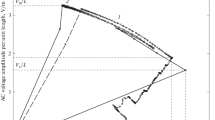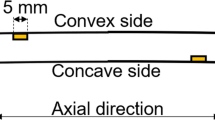Abstract
Temperature modes that result in the appearance of thermoplastic deformations and in the formation of residual stresses in the drawing of wire superconducting blanks are considered.
Similar content being viewed by others
References
Kolmogorov, G.L., Gidrodinamicheskaya smazka pri obrabotke metallov davleniem (Hydrodynamic Lubrication in Metal Forming), Moscow: Metallurgiya, 1986.
Timoshenko, S.P. and Gud’er, Dzh., Teoriya uprugosti (Elasticity Theory), Moscow: Nauka, 1975.
Shikov, A.K., Nikulin, A.D., Silaev, A.G., et al., Izv. Vyssh. Uchebn. Zaved., Tsvetn. Metall., 2003, no. 1, p. 36.
Author information
Authors and Affiliations
Corresponding author
Additional information
Original Russian Text © G.L. Kolmogorov, N.A. Kosheleva, E.V. Kusnetsova, T.V. Chernova, 2011, published in Izvestiya VUZ. Tsvetnaya Metallurgiya, 2011, No. 3, pp. 23–26.
About this article
Cite this article
Kolmogorov, G.L., Kosheleva, N.A., Kusnetsova, E.V. et al. Temperature conditions and modes of formation of residual stresses in wiredrawing. Russ. J. Non-ferrous Metals 52, 227–229 (2011). https://doi.org/10.3103/S106782121103014X
Published:
Issue Date:
DOI: https://doi.org/10.3103/S106782121103014X




